Volume 78, Issue 6
Displaying 1-15 of 15 articles from this issue
- |<
- <
- 1
- >
- >|
-
1987 Volume 78 Issue 6 Pages 529-533
Published: 1987
Released on J-STAGE: March 17, 2008
Download PDF (409K) -
1987 Volume 78 Issue 6 Pages 534-536
Published: 1987
Released on J-STAGE: March 17, 2008
Download PDF (207K) -
1987 Volume 78 Issue 6 Pages 537-546
Published: 1987
Released on J-STAGE: March 17, 2008
Download PDF (638K) -
1987 Volume 78 Issue 6 Pages 547-558
Published: 1987
Released on J-STAGE: March 17, 2008
Download PDF (815K) -
1987 Volume 78 Issue 6 Pages 559-564
Published: 1987
Released on J-STAGE: March 17, 2008
Download PDF (401K) -
1987 Volume 78 Issue 6 Pages 565-570
Published: 1987
Released on J-STAGE: March 17, 2008
Download PDF (467K) -
1987 Volume 78 Issue 6 Pages 571-576
Published: 1987
Released on J-STAGE: March 17, 2008
Download PDF (424K) -
1987 Volume 78 Issue 6 Pages 577-582
Published: 1987
Released on J-STAGE: March 17, 2008
Download PDF (383K) -
1987 Volume 78 Issue 6 Pages 583-589
Published: 1987
Released on J-STAGE: March 17, 2008
Download PDF (532K) -
1987 Volume 78 Issue 6 Pages 590-595
Published: 1987
Released on J-STAGE: March 17, 2008
Download PDF (418K) -
1987 Volume 78 Issue 6 Pages 596-606
Published: 1987
Released on J-STAGE: March 17, 2008
Download PDF (761K) -
1987 Volume 78 Issue 6 Pages 607-613
Published: 1987
Released on J-STAGE: March 17, 2008
Download PDF (421K) -
1987 Volume 78 Issue 6 Pages 614-620
Published: 1987
Released on J-STAGE: March 17, 2008
Download PDF (497K) -
1987 Volume 78 Issue 6 Pages 621-627
Published: 1987
Released on J-STAGE: March 17, 2008
Download PDF (497K) -
1987 Volume 78 Issue 6 Pages 628-629
Published: 1987
Released on J-STAGE: March 17, 2008
Download PDF (116K)
- |<
- <
- 1
- >
- >|
